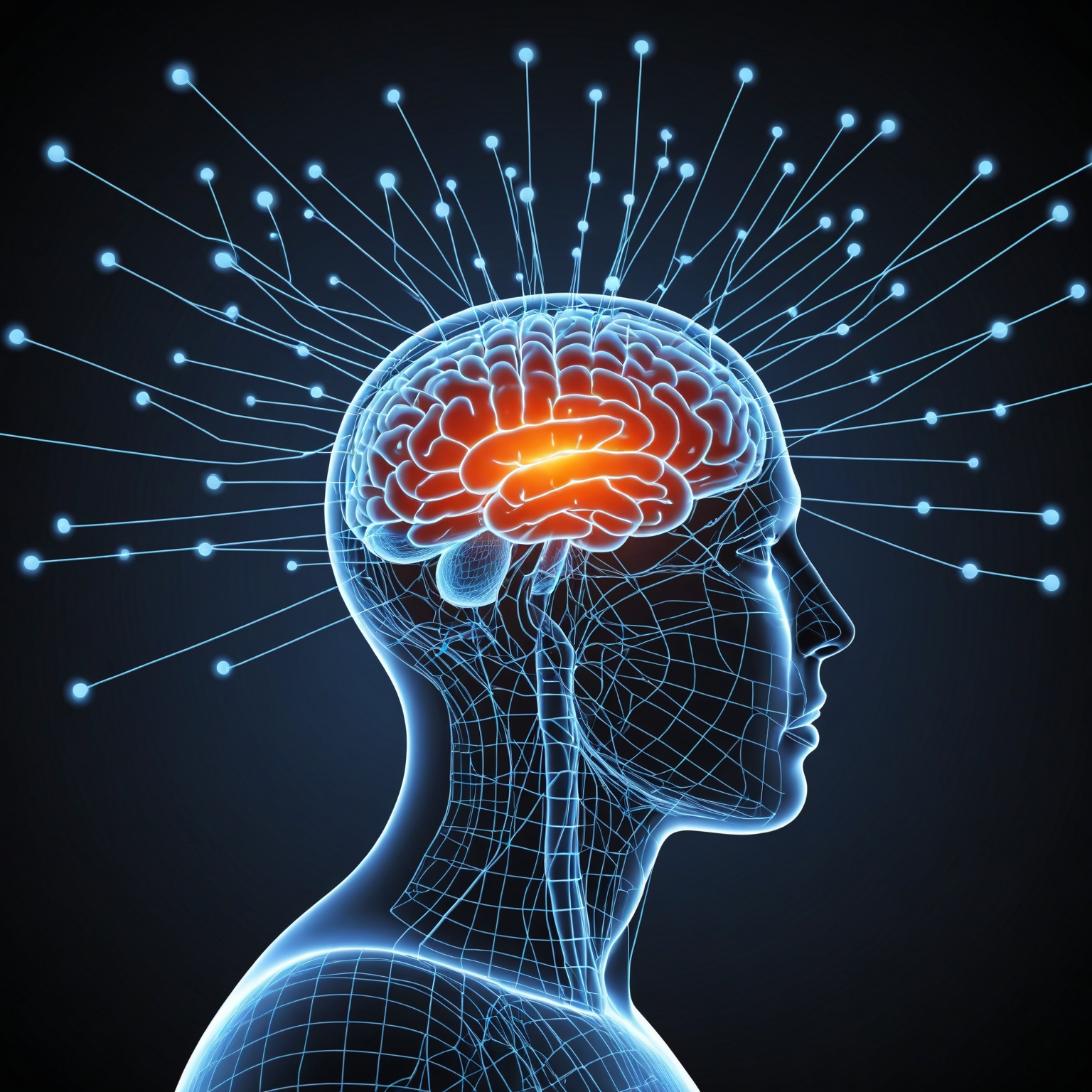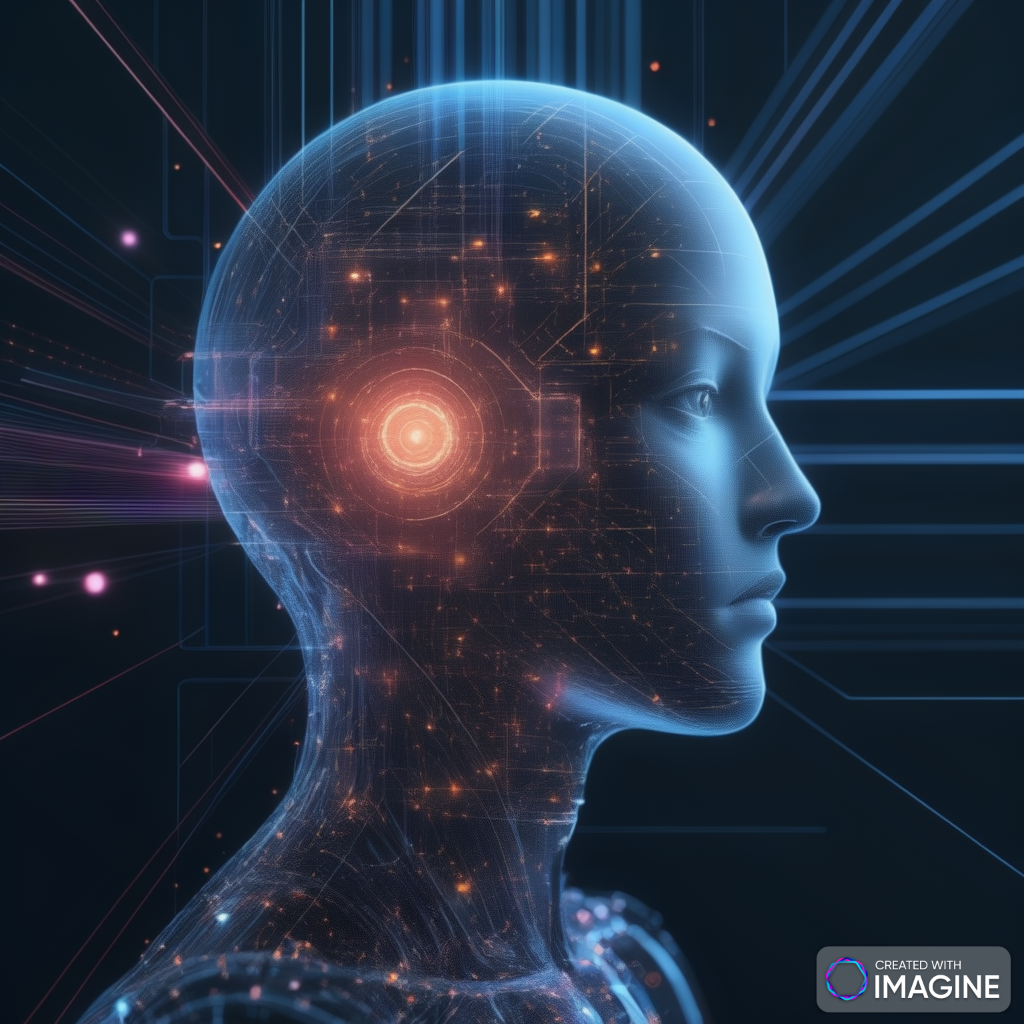The Science Behind Thoughts, Emotions, and Feelings: Exploring Molecules, DNA, RNA, Cells, and More
Human thoughts, emotions, and feelings are complex phenomena shaped by an intricate interplay of biological, chemical, and physical processes. To unravel this fascinating tapestry, we must delve into the fundamental building blocks of life—molecules, DNA, RNA, cells, proteins, atoms, nuclei, and particles—and understand how they contribute to the experiences that define our humanity.
1. Atoms: The Foundation of Existence
Atoms are the smallest units of matter, composed of a nucleus (protons and neutrons) surrounded by electrons. They form molecules, which are the building blocks of cells. These atoms and molecules interact to create the biochemistry essential for life, such as neurotransmitters, hormones, and enzymes that influence thoughts and emotions.
Key Elements in Biology:
- Carbon, hydrogen, oxygen, and nitrogen form the backbone of organic molecules like proteins, DNA, and RNA.
- Trace elements like iron, zinc, and magnesium play critical roles in cellular functions, including neural activity.
2. Molecules and Their Role in Emotions
Molecules are groups of atoms bonded together, and in the human body, they orchestrate the processes that govern thoughts and feelings.
- Neurotransmitters: Molecules like dopamine, serotonin, and norepinephrine transmit signals in the brain, influencing mood and thought processes.
- Hormones: Chemical messengers like cortisol (stress) and oxytocin (bonding) regulate emotional responses.
- Lipids: Fat molecules form cell membranes, including those of neurons, affecting signal transmission.
3. DNA and RNA: The Blueprint and Messenger
DNA (Deoxyribonucleic Acid)
DNA is the genetic material that carries the instructions for building and maintaining the human body. It influences emotions and thoughts through gene expression, which determines how cells function. Specific genes may regulate neurotransmitter levels, impacting mood and cognitive abilities.
RNA (Ribonucleic Acid)
RNA transcribes and translates DNA instructions to create proteins. In the brain, these proteins play roles in forming synaptic connections, which are crucial for learning, memory, and emotion regulation.
For instance, the COMT gene, which influences dopamine metabolism, affects how individuals process stress and emotions.
4. Proteins: The Workhorses of Cells
Proteins are the products of gene expression and perform countless functions in the body. In the context of thoughts and emotions, they:
- Act as receptors for neurotransmitters on neuron surfaces.
- Form enzymes that synthesize and degrade neurotransmitters.
- Facilitate structural integrity in neurons and synaptic connections.
5. Cells: The Building Blocks of Life
Neurons
Neurons, the primary cells of the brain and nervous system, are central to thought and emotion. They communicate via electrical impulses and chemical signals, forming networks that encode memories, emotions, and decision-making processes.
Glial Cells
Supportive cells like astrocytes and microglia maintain the health of neurons and modulate neural activity, indirectly influencing thoughts and feelings.
6. The Nucleus: Command Center of the Cell
The nucleus houses DNA and regulates cellular activities through gene expression. In neurons, nuclear activity ensures that proteins required for neurotransmitter production and synaptic plasticity are synthesized, enabling cognitive and emotional processes.
7. Particles of Thought and Emotion
Quantum Mechanics and Consciousness
On a deeper level, some theories suggest that quantum particles may influence neural activity. While this is still speculative, the idea is that subatomic particles and their interactions could affect how information is processed in the brain.
Emerging Fields
- Electromagnetic waves generated by neurons may encode thought patterns.
- Quantum tunneling might contribute to neural computations, though this remains a frontier of research.
8. The Interplay Between Biology and Emotions
The Brain-Body Connection
- Gut-brain axis: Molecules like serotonin (mostly produced in the gut) impact mood and cognition.
- Immune response: Cytokines released during inflammation can influence mental states, potentially contributing to anxiety or depression.
Plasticity and Adaptation
The brain’s ability to rewire itself, known as neuroplasticity, is a testament to the dynamic interaction of molecules, cells, and proteins in shaping thoughts and emotions. This adaptability underpins learning and emotional resilience.
9. From Biology to Experience
Thoughts
Thoughts are patterns of neural activity, shaped by genetics (DNA), environment, and learning. They involve the coordinated firing of neurons and the release of neurotransmitters.
Emotions
Emotions are rapid responses to stimuli, involving the limbic system (e.g., amygdala) and regulated by neurotransmitters and hormones.
Feelings
Feelings are the conscious awareness of emotions, influenced by higher-order brain regions like the prefrontal cortex.
10. Holistic Perspectives
While molecules, DNA, and cells explain the biological basis of thoughts and feelings, human experience is also shaped by environment, culture, and habits. This interplay suggests that nurturing both body and mind through healthy practices can optimize emotional well-being.
detailed exploration of how molecules, DNA, RNA, cells, proteins, atoms, and subatomic particles contribute to thoughts, emotions, and feelings, covering perspectives from science, evolution, genetics, biology, diet, environment, and more.
1. Atoms: Building Blocks of Life and Thought
Science Perspective
Atoms, consisting of a nucleus (protons and neutrons) surrounded by electrons, are the foundation of all matter, including the brain. The specific arrangement of atoms forms molecules, which carry out vital biochemical processes.
For example:
- Hydrogen and oxygen atoms combine to form water, a critical medium for biochemical reactions in cells.
- Carbon-based molecules form the structure of neurotransmitters like dopamine, essential for mood and thought.
Evolutionary Perspective
Atoms were forged in the cores of stars during the early universe. Over billions of years, these atoms combined to form molecules like amino acids, which are precursors to life. This “stardust” evolved into complex organisms with advanced neural systems capable of thoughts and emotions.
2. Molecules: Chemical Basis of Feelings
Biological Role
Molecules such as neurotransmitters (dopamine, serotonin) are synthesized in neurons and govern emotions and cognition.
- Dopamine is involved in reward and motivation.
- Serotonin regulates mood, sleep, and digestion.
Diet and Nutrition Impact
- A diet rich in tryptophan (found in nuts, eggs, and turkey) promotes serotonin production.
- Omega-3 fatty acids (from fish) support the lipid composition of neurons, enhancing molecular communication.
3. DNA and RNA: The Blueprint and Messenger
Genetic Insights
DNA carries instructions for synthesizing proteins that affect brain function. Mutations in specific genes can predispose individuals to mental health conditions like depression or anxiety. For instance:
- BDNF (Brain-Derived Neurotrophic Factor): Plays a role in synaptic plasticity, influencing learning and memory.
Environment and Epigenetics
The environment can influence DNA expression without altering the sequence. For instance, chronic stress can methylate DNA, reducing the expression of genes critical for resilience.
RNA’s Advanced Role
RNA’s role extends beyond protein synthesis. MicroRNAs regulate gene expression and are involved in neural development and synaptic function.
4. Proteins: Functional Molecules in Thought and Emotion
Science and Biology
Proteins are synthesized from amino acids and perform various functions in the brain:
- Receptors: Proteins on neuron surfaces bind neurotransmitters to propagate signals.
- Transporters: Facilitate reuptake of neurotransmitters, terminating the signal.
Impact of Diet
- Adequate protein intake (e.g., from beans or meat) provides essential amino acids for neurotransmitter production.
- Deficiency in specific amino acids like phenylalanine can disrupt dopamine synthesis.
5. Cells: The Machinery of the Mind
Neurons: The Core Players
Neurons communicate via synapses, where electrical signals trigger the release of neurotransmitters.
Gut-Brain Connection
The gut contains its own neural network (the enteric nervous system) and produces around 90% of the body’s serotonin. Gut health, influenced by diet and microbiota, directly affects mood and cognition.
6. The Nucleus: The Brain of the Cell
Biological Perspective
The nucleus in each neuron regulates activity by controlling which proteins are produced. It responds to environmental signals, ensuring the neuron adapts to changing needs.
Impact of Stress
Chronic stress activates nuclear processes that may impair cognitive function, leading to issues like brain fog or depression.
7. Quantum Particles and Thought
Theoretical Physics
Some hypotheses suggest quantum mechanics could explain consciousness. Subatomic particles, such as electrons, might contribute to the brain’s information processing in ways not yet fully understood.
8. Environment and Thought
Environmental Impact
- Urban environments with high stress levels may increase cortisol production, affecting emotional health.
- Nature exposure reduces stress and enhances well-being by modulating neural activity.
9. Habits and Mental Patterns
Behavioral Science
Repetitive thoughts and behaviors shape neural connections, making them stronger over time. Mindfulness practices can help rewire negative patterns.
10. Diet, Digestion, and Emotions
Gut Microbiome’s Role
Gut bacteria produce short-chain fatty acids and neurotransmitter precursors, directly influencing brain function.
Nutritional Needs
- Antioxidants (from fruits) protect neurons from oxidative stress.
- B vitamins support energy metabolism in brain cells.
1. Interplay of Molecular Pathways and Neural Networks
Basics: Molecular Signaling
- Ligands and Receptors: Molecules such as hormones and neurotransmitters bind to receptors on cells to initiate signaling pathways. For example, cortisol, a stress hormone, binds to receptors in brain cells, influencing emotions like fear and anxiety.
- Second Messengers: These are molecules like cyclic AMP (cAMP) that relay signals from receptors to target molecules within cells, amplifying the response.
Advanced: Crosstalk Between Pathways
- Synaptic Plasticity: Molecular changes at the synapse strengthen or weaken connections between neurons based on experiences, critical for learning and memory.
- Neurotrophic Factors: Proteins like BDNF promote neuron survival, growth, and differentiation, which are essential for emotional resilience and cognitive flexibility.
2. Genetic Variability and Personalization of Emotions
Basics: Genetic Polymorphisms
- Variations in genes, such as those encoding for serotonin transporters (SLC6A4), influence how individuals experience mood and stress.
- Single Nucleotide Polymorphisms (SNPs): Small genetic variations can make some individuals more prone to conditions like depression or anxiety.
Advanced: CRISPR and Gene Editing in Emotional Health
- Gene-editing technologies like CRISPR are being explored to correct genetic mutations linked to emotional and cognitive disorders.
- Epigenome Engineering: Modulating gene expression through epigenetic changes can influence emotional regulation without altering the DNA sequence itself.
3. Role of Metabolites in Brain Function
Basics: Brain Metabolites
- Glucose: The brain’s primary energy source, affecting concentration and cognitive performance.
- Lactate: Produced during intense activity, lactate serves as an alternative energy source and modulates neuronal activity.
Advanced: Metabolomics in Mental Health
- Profiling metabolites in the brain can reveal biochemical imbalances associated with disorders like bipolar disorder or schizophrenia.
- Ketone Bodies: During fasting or ketogenic diets, ketone bodies like beta-hydroxybutyrate support brain function and may improve mood disorders.
4. Cellular Specialization in Emotional Processing
Basics: Types of Brain Cells
- Astrocytes: These support neurons by regulating neurotransmitter levels and synaptic activity.
- Microglia: Immune cells in the brain that clean up debris and modulate inflammation, which can impact mood and cognition.
Advanced: Non-Neuronal Contributions
- Recent research shows that non-neuronal cells, such as astrocytes and oligodendrocytes, play active roles in emotional processing and cognition.
- Glia-Neuron Interactions: Glial cells influence synaptic activity and plasticity, contributing to learning and emotional regulation.
5. Gut-Brain Axis and Emotional Health
Basics: Gut Microbiota
- The gut is home to trillions of microorganisms that produce neurotransmitter precursors like serotonin and dopamine.
- Vagus Nerve: This nerve connects the gut to the brain, allowing for bidirectional communication that influences emotions.
Advanced: Microbiome Manipulation
- Fecal Microbiota Transplants (FMT): Emerging therapies for emotional and cognitive disorders involve transferring healthy gut bacteria.
- Psychobiotics: Probiotic strains like Lactobacillus and Bifidobacterium are being studied for their potential to enhance mood and reduce anxiety.
6. Environmental Triggers and Epigenetic Imprints
Basics: Environmental Stressors
- Chronic stress, pollution, and social isolation can activate stress-response pathways, leading to long-term changes in brain function.
- Epigenetic Changes: Environmental factors can cause DNA methylation or histone modification, affecting gene expression.
Advanced: Reversibility of Epigenetic Changes
- Therapeutic interventions like mindfulness, exercise, or pharmacological agents can reverse negative epigenetic marks, improving emotional health.
- Prenatal and Early-Life Environment: Maternal stress or nutrition during pregnancy can epigenetically shape an individual’s emotional and cognitive predispositions.
7. Quantum Biology and Brain Function
Basics: Quantum Effects in Biology
- Quantum processes like tunneling and superposition might play a role in molecular interactions within the brain, such as electron transport in mitochondria.
- Magnetoreception: Some hypotheses suggest quantum phenomena could explain the brain’s ability to process complex information.
Advanced: Quantum Consciousness Hypothesis
- Theories like Orch-OR (Orchestrated Objective Reduction) propose that quantum coherence in microtubules within neurons could contribute to consciousness and emotional experience.
- While speculative, this area bridges quantum mechanics and neuroscience.
8. Hormonal Regulation and Emotional States
Basics: Hormones and Mood
- Hormones like oxytocin (bonding hormone) and cortisol (stress hormone) have direct effects on mood and behavior.
- Circadian Rhythms: Hormonal cycles influence sleep-wake patterns, which are tightly linked to emotional health.
Advanced: Hormone Therapy
- Treatments like estrogen therapy in postmenopausal women can improve mood and cognition.
- Synthetic Hormone Modulation: Advanced drugs are being developed to selectively modulate hormone receptors for tailored emotional interventions.
9. Neural Oscillations and Emotional Rhythms
Basics: Brain Waves
- Different brain wave frequencies (alpha, beta, gamma) correspond to specific emotional and cognitive states. For example:
- Alpha waves: Linked to relaxation.
- Beta waves: Associated with active thinking and stress.
Advanced: Neurofeedback
- Techniques that train individuals to consciously alter their brainwave patterns are being used to treat anxiety, depression, and PTSD.
- Deep Brain Stimulation (DBS): Stimulating specific brain regions with electrodes can regulate emotional states.
10. Social and Cultural Modulation of Biology
Basics: Cultural Conditioning
- Social norms influence how emotions are expressed and processed. For instance, collectivist cultures may emphasize emotional suppression for group harmony.
Advanced: Biocultural Interactions
- Cultural practices, such as meditation or communal living, can biologically shape the brain, influencing gene expression and neural connectivity.
- Anthropogeny: The study of human evolution reveals how societal shifts (like agriculture or urbanization) have biologically influenced emotional and cognitive processes.
11. Personalized Medicine and Emotional Health
Basics: Pharmacogenomics
- Genetic profiling allows for customized treatment of emotional disorders, such as selecting the right antidepressant based on genetic predisposition.
Advanced: AI-Driven Diagnostics
- Machine learning models can analyze genetic, molecular, and behavioral data to predict emotional vulnerabilities and suggest interventions.
12. Future Frontiers: Molecular and Digital Integration
Brain-Computer Interfaces (BCIs):
- Technologies like BCIs are being developed to directly link brain activity with external devices, allowing for real-time emotion regulation.
Molecular-Level Editing:
- Advances in nanotechnology may one day allow for precise manipulation of individual molecules in the brain to enhance emotional resilience or cognitive function.
This extended list explores how molecules, genes, cells, and the environment interact with increasingly advanced perspectives, avoiding repetition while delving deeper into the fascinating interplay that governs our thoughts and emotions. Let me know if you’d like further expansion on any specific topic!
Conclusion
Thoughts, emotions, and feelings are the result of complex interactions among molecules, cells, genes, and environmental factors. Understanding these layers empowers us to make choices—dietary, behavioral, and environmental—that optimize mental well-being and emotional health.
The journey from atoms to feelings is a testament to the complexity and wonder of human biology. By understanding how molecules, DNA, RNA, cells, proteins, and subatomic particles contribute to thoughts and emotions, we gain insights into what makes us human. This knowledge not only deepens our appreciation of life’s intricacies but also opens pathways for improving mental health and emotional resilience.





